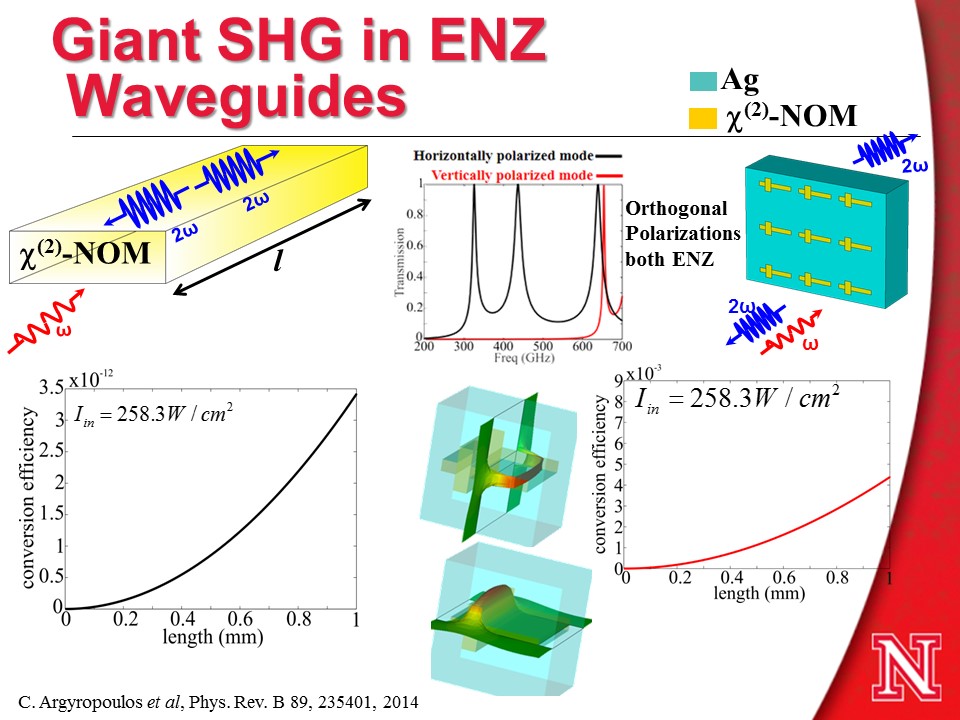Nonlinear and Quantum Zero-Index Metamaterials and Plasmonic Waveguides:
Metamaterials with near-zero-permittivity (ENZ), or equivalently plasmonic modes operated near their cut-off, lead to electromagnetic wave propagation with infinite phase velocity, where the wavelength becomes almost infinite. Recently, we loaded nonlinear materials in this type of waveguides to efficiently boost the naturally weak nonlinear optical responses. It was found that these plasmonic structures can spatially extend the nonlinearity enhancement, producing even larger efficiencies and lower power needs, with a moderate Q-factor of the associated resonance. The effects have been shown to effectively enhance by several orders of magnitude the Kerr third-order nonlinear susceptibility. Moreover, the Purcell factor can also be enhanced at the ENZ operation without the usual restrictions of small volumes and high Q-factor resonances. This may be interesting for future optical nanocircuits and laser designs. ENZ channels can also sustain efficient soliton waves (slow-light) at TLC wavelengths, triggered by much lower input intensities compared to conventional optical fiber systems. In this case, the efficiency of optical data storage may be enhanced. These devices can be used as efficient all-optical switches, data synchronizers and broadband slow-light systems. Low power soliton propagation, Purcell enhancement, giant second harmonic generation and, in general, frequency mixing can be achieved with ENZ cross-slit waveguides, due to their novel phase matching capabilities and their uniform enhanced fields inside the channels. Finally, great enhancement in the directivity of RF antennas can be obtained, when they are combined with ENZ structures. 
